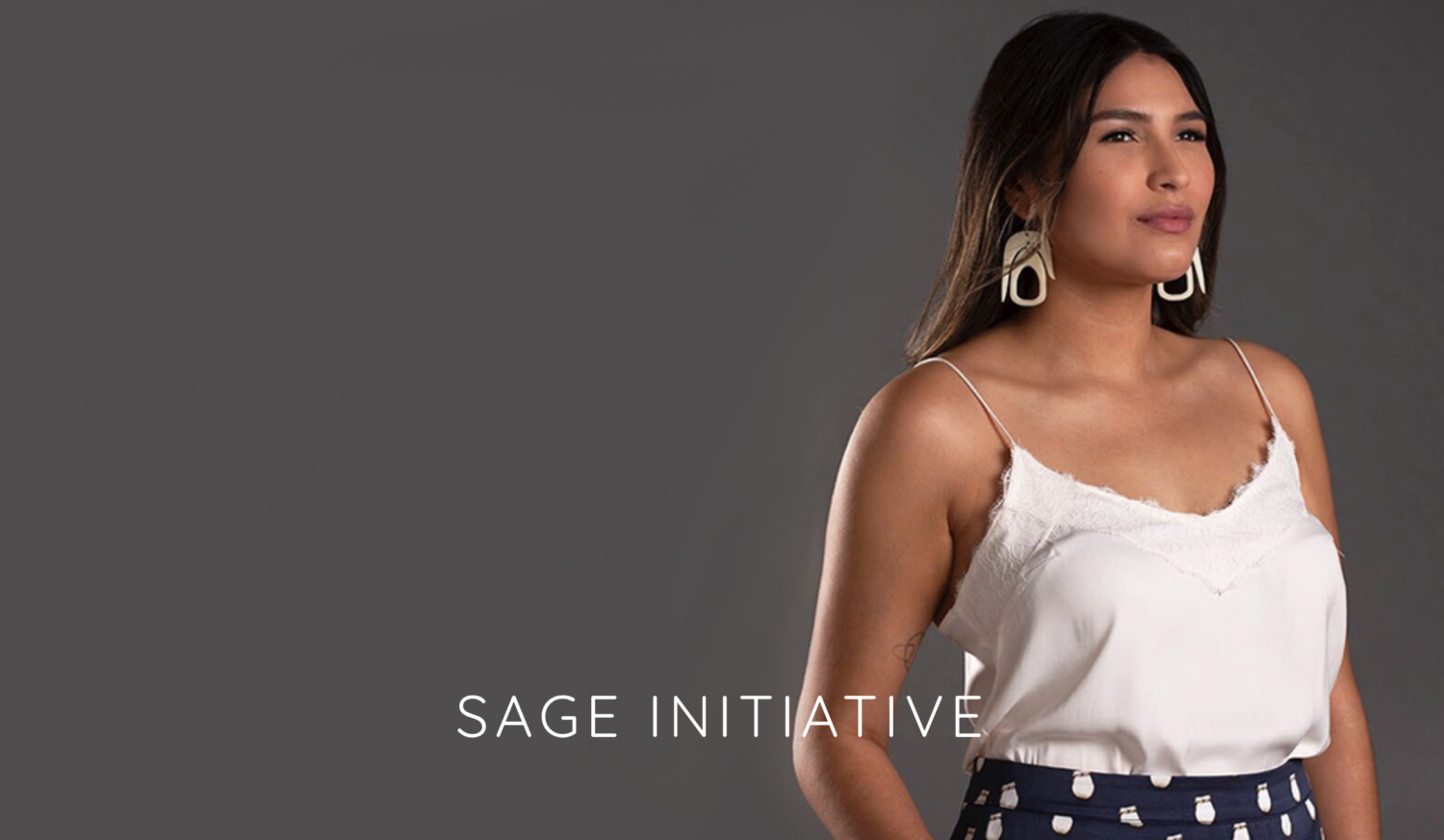This founder’s new program is reactivating Indigenous concepts of investing — here’s how
Why It Matters
“A key strategy in the colonization process, the residential school system, and the Indian Act, was to remove Indigenous Peoples from the land and displace Indigenous economies for the benefit of the settler population,” reads the Sage Initiative website. “This initiative is designed to reverse that process.”

Money has been a difficult subject for Sage Lacerte, for as long as she can remember.
“I knew that I was poor, and I knew that everyone else thought I was poor,” says the founder of Sage Initiative, a new mentorship and training program for Indigenous women in impact investing launching its inaugural cohort this fall.
As a Carrier from the Lake Babine Nation on the west coast of what’s now called Canada, Lacerte says she’s always very acutely felt the effects of settler-colonial perceptions of how Indigenous people interact with money. “I was raised with narratives that Indigenous people are a suck on a capitalist system, and that the work that we do…to protect mother earth and towards human rights,” she says, “that these are a waste of time. I learned that from media and from my settler friends.”
These narratives had real impacts on her life: “It made me really uncomfortable talking about money, thinking about money, and it made me really financially illiterate,” she says.
It wasn’t until she got her first full-time, nine-to-five job that Lacerte began thinking about what to do with the surplus of money she now had. She considered a savings account, of course, and looked at mutual funds, but neither felt quite right — or in line with the Indigenous values she was raised with.
So, she decided to invest in an Indigenous-owned green energy company, “somewhere where it would impact families right away, it would employ Indigenous communities,” and it would help propel a more sustainable energy system for an Indigenous community, she says.
“And that helped with the shift in understanding about what it means to be wealthy. Because my money is going somewhere and it’s generative — it’s generating financial or fiscal return — but it was also doing something to benefit my people, and also feed my spirit,” Lacerte says. “That, in my mind, is what it means for money to behave as medicine. It nurtures the land, Mother Earth, it nurtures the people, it’s generative. And it nurtures my spirit, because I’m doing something good that I can be proud of.”
Lacerte felt so good about this decision and her newfound empowerment around money that she wanted to share it with others — and to keep learning herself. That’s how Sage Initiative was born. The program will accept 10 investors into its first cohort, but Lacerte will be the 11th. She’s building the program for herself as much as for other Indigenous women, she says.
The group will meet for the first time this coming fall, for the first of three three-day sessions over the following six months. They’ll receive “trauma-informed impact investment literacy training that intertwines Indigenous commerce with hard investment skills,” be matched with an impact investor mentor who’ll provide them with $5,000 to invest, and discuss ways the impact investment sector can embrace Indigenous concepts of wealth and economy.
Why Indigenous women, specifically? “My vision in one word is: rematriation,” Lacerte says. “Before the Indian Act, Indigenous women, really, were the ones who were the clan mothers, who decided where the money went and how the resources were spent and who did what. There were circles of matriarchs who would counsel you and support you. All of that changed when the Indian Act disenfranchised women and placed all of the roles of power and leadership on men.”
And still, today, “Indigenous women entrepreneurs, Indigenous matriarchs in our communities, are so centred on creating circular economies, making sure that Mother Earth is considered, making sure we’re seeing those financial returns so we can continue doing our projects, and making sure that everyone in the community is being considered when forming a project,” Lacerte says. “That’s the model that Indigenous women take in business.”
Her own background is an example, having studied gender policy and Indigenous studies at the University of Victoria — decidedly not a business degree. “I used all of those teachings, which I believe to support my decolonized mindset, rather than going to business school or doing a commerce degree. I felt it was really important to be able to learn about relationships and identity and our relationship to the land — and how relationships function, power asymmetries,” she says. “All of that really formed the way that I structured my business.”
Lacerte says Sage Initiative is part of a cohort of thinkers working toward a “discursive shift in how people think about Indigenous peoples’ relationship to money and wealth.” Others in this movement include Carol Anne Hilton, who Lacerte counts as one of her own mentors, and Edgar Villanueva, she says. Hilton is the author of Indigenomics, a book about Indigenous economies, and Villanueva’s work focuses on decolonizing philanthropy.
Still, “there is no one who is doing any training of this kind,” Lacerte says. While some universities offer courses in impact investing, “nothing would offer teachings that incorporate spiritual and emotional aspects of engaging with money. Almost none of them are led by women.”
For example, Lacerte says, Sage Initiative will have a “circle of matriarchs, where you can go and talk to them, not about the investment curriculum, but how it made you feel, what your dreams are, and what you may be able to make out of this.”
